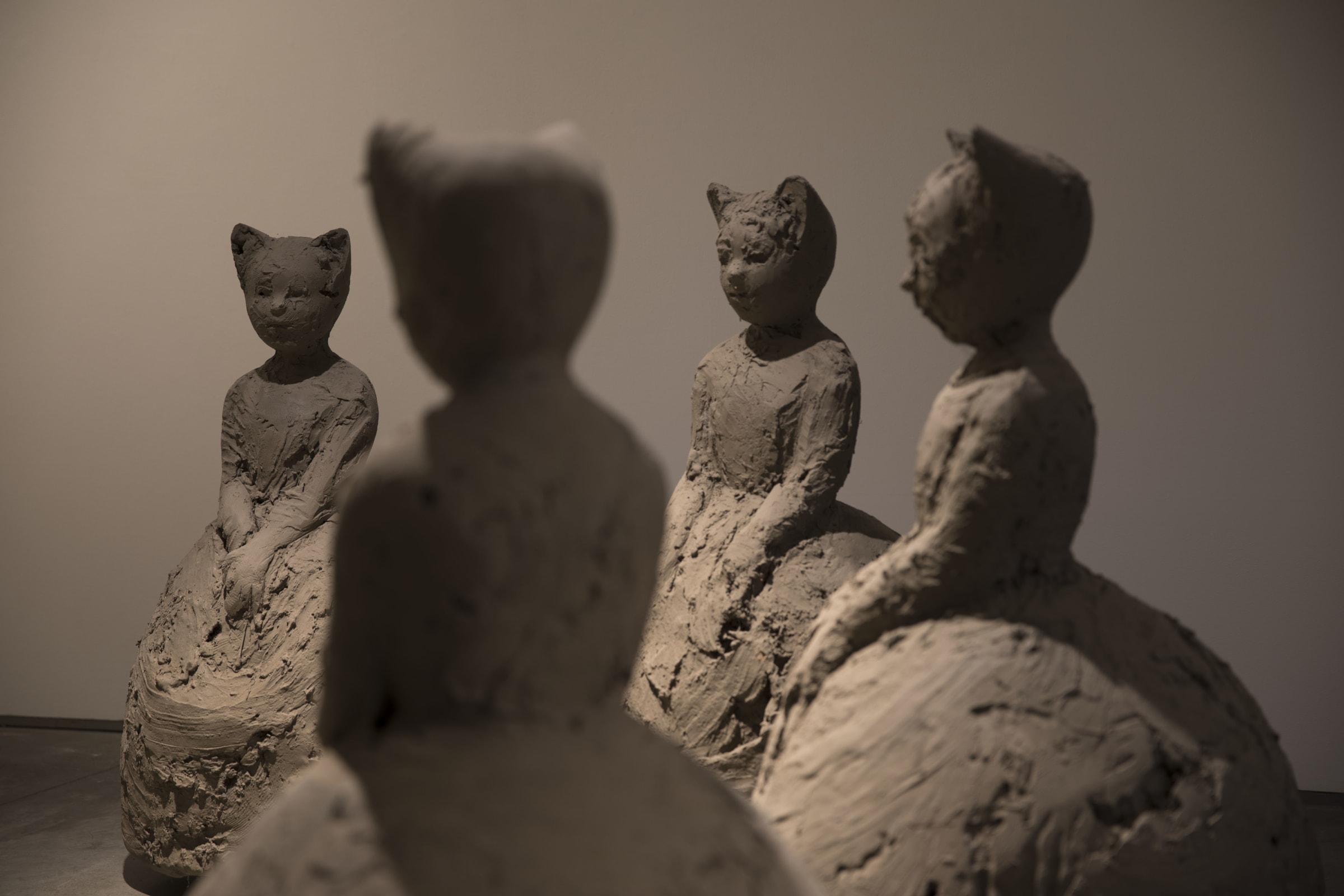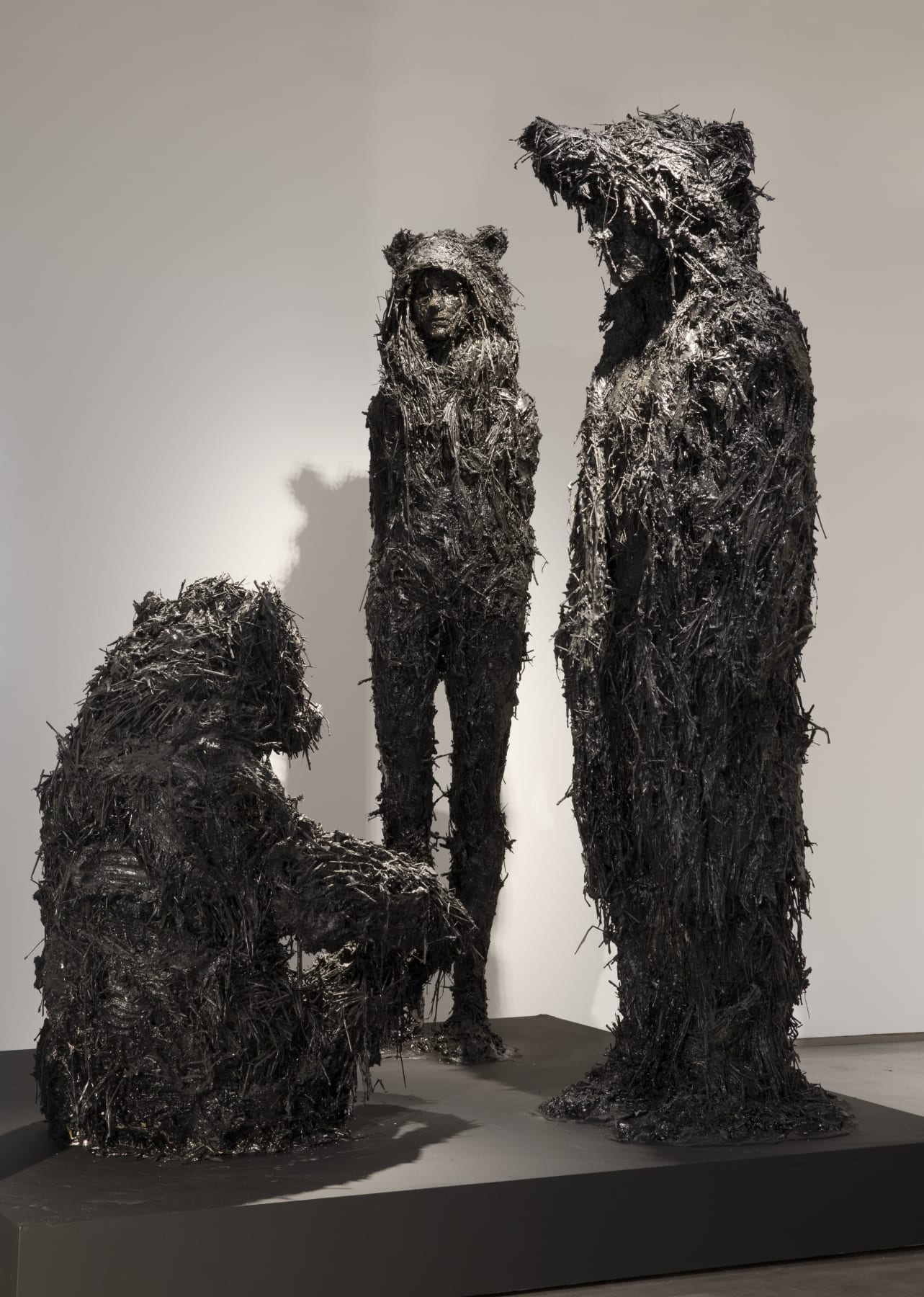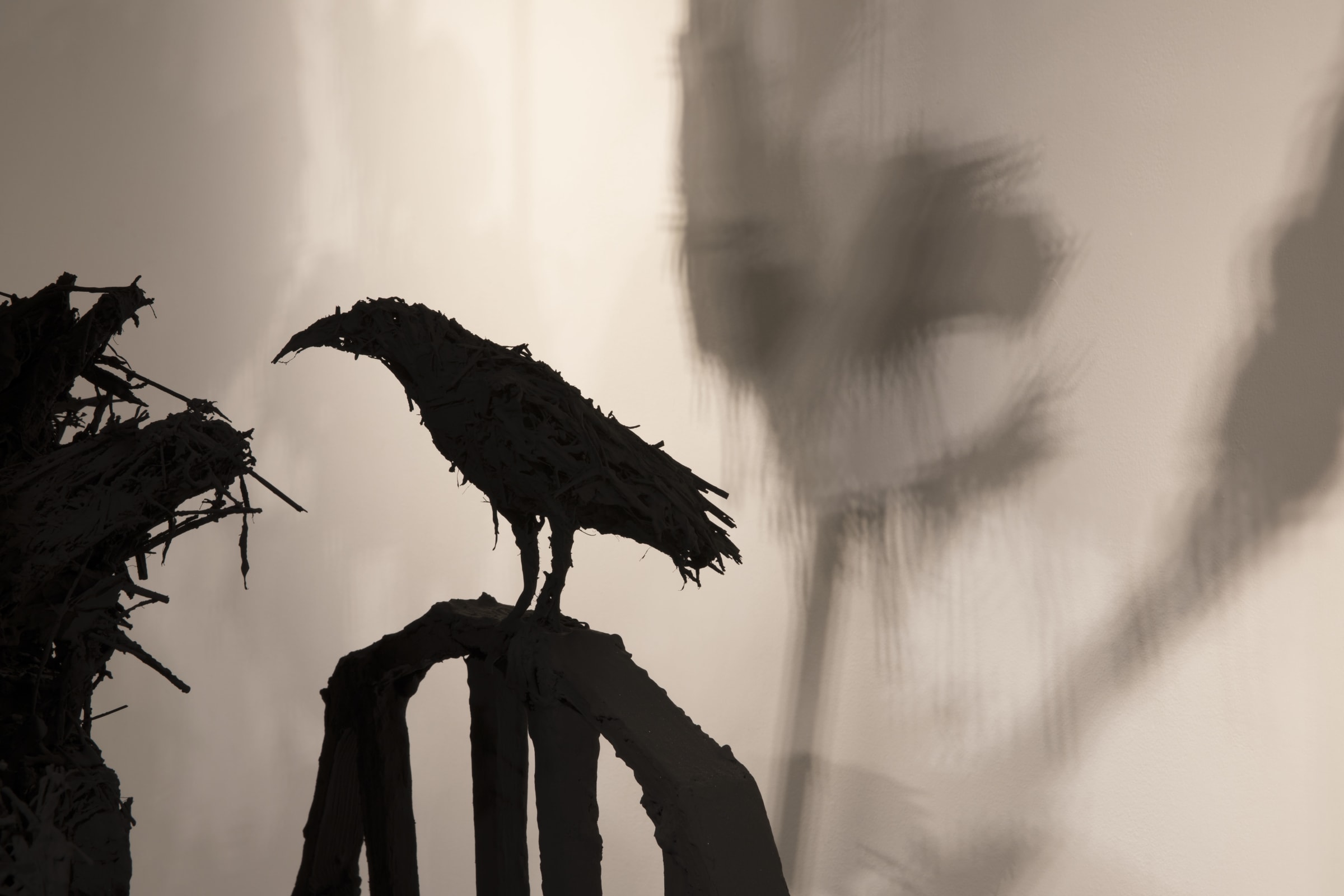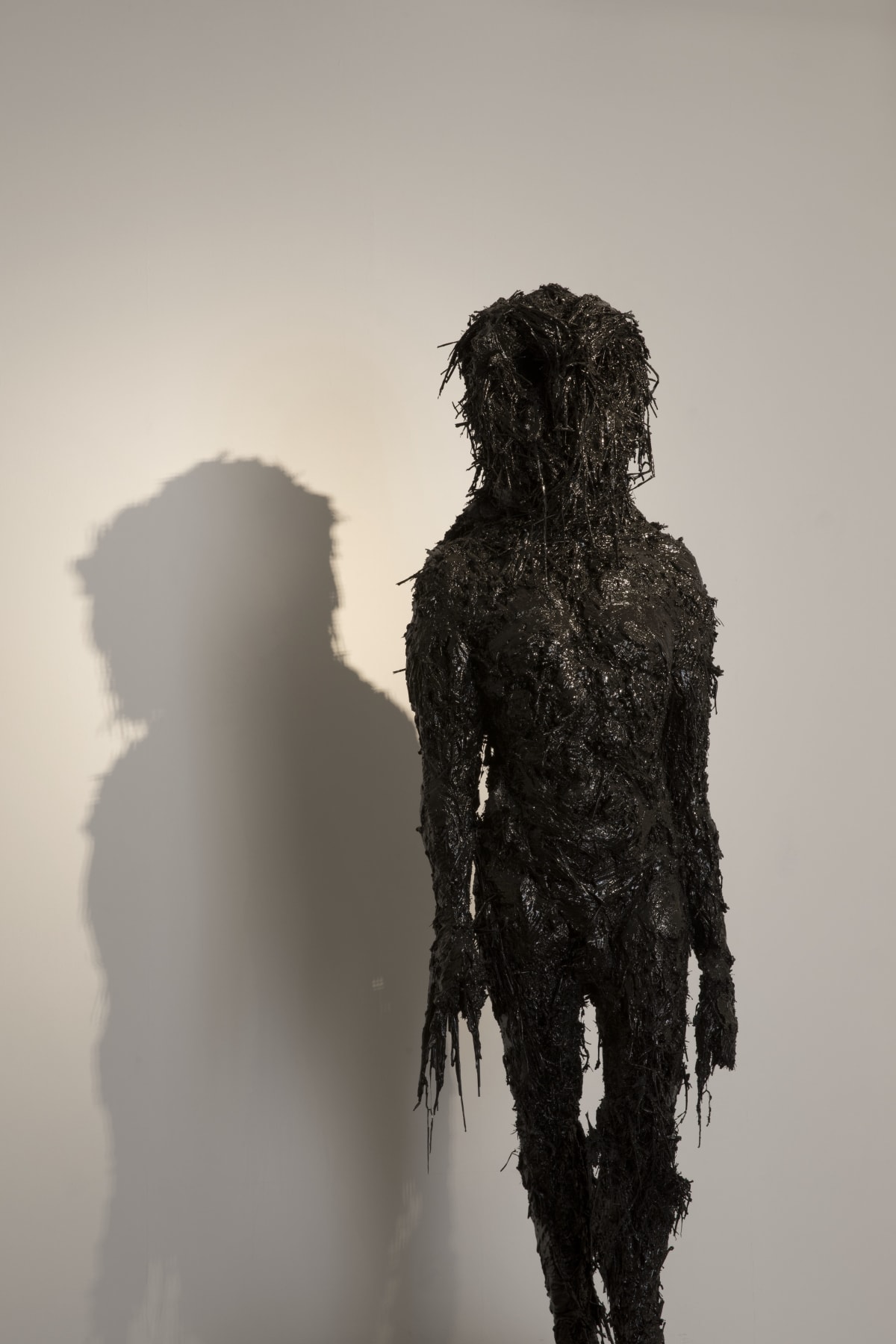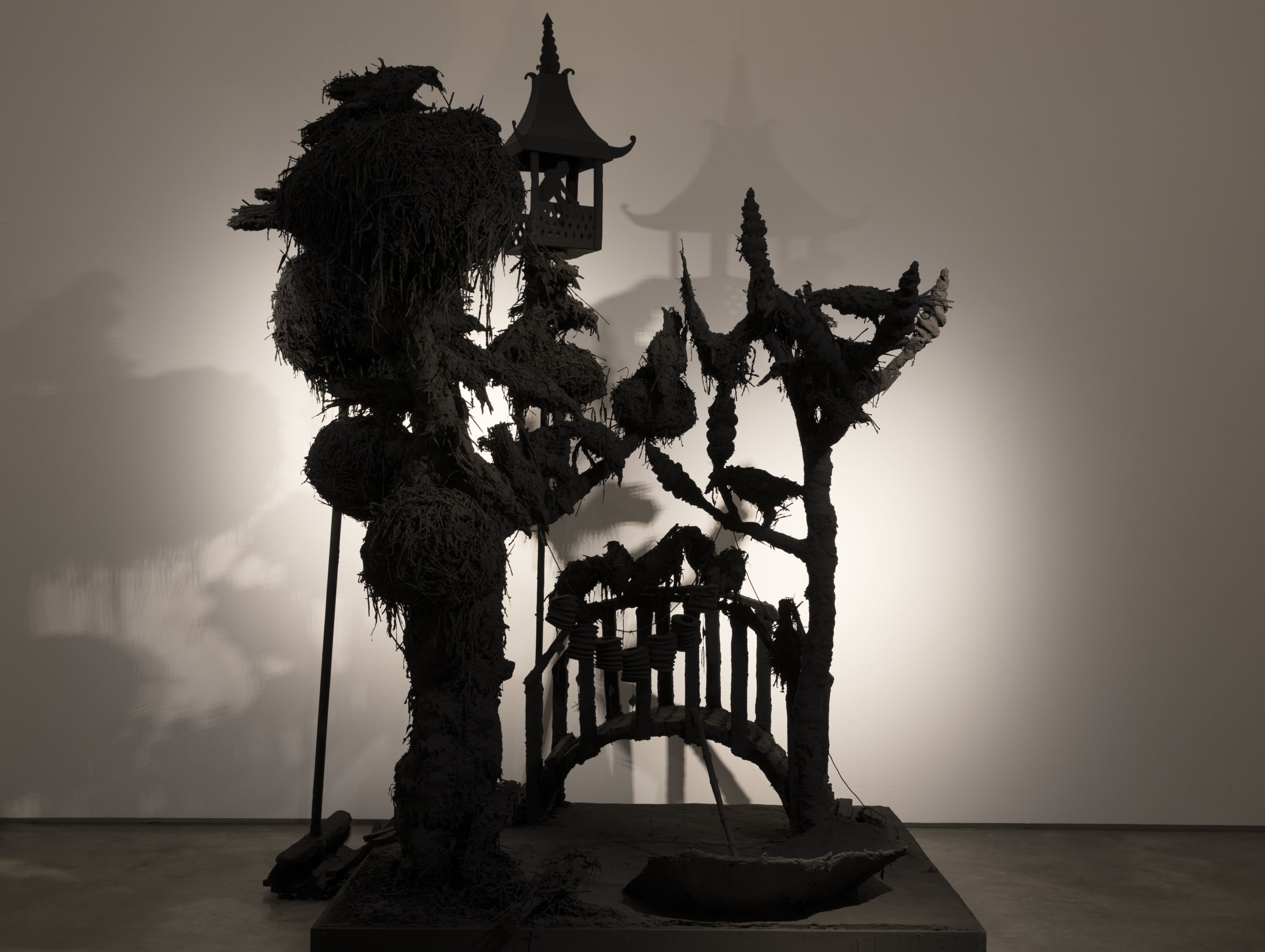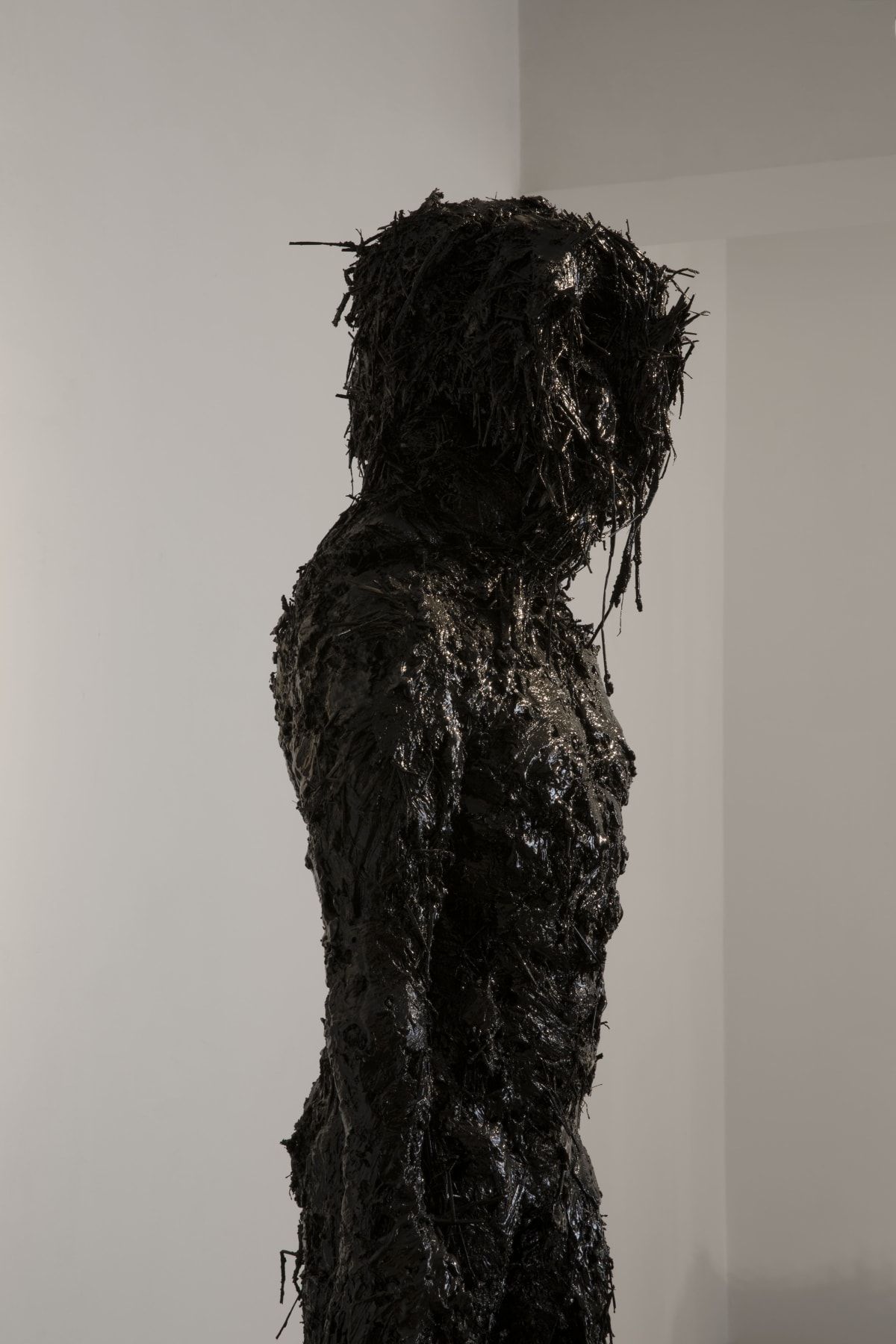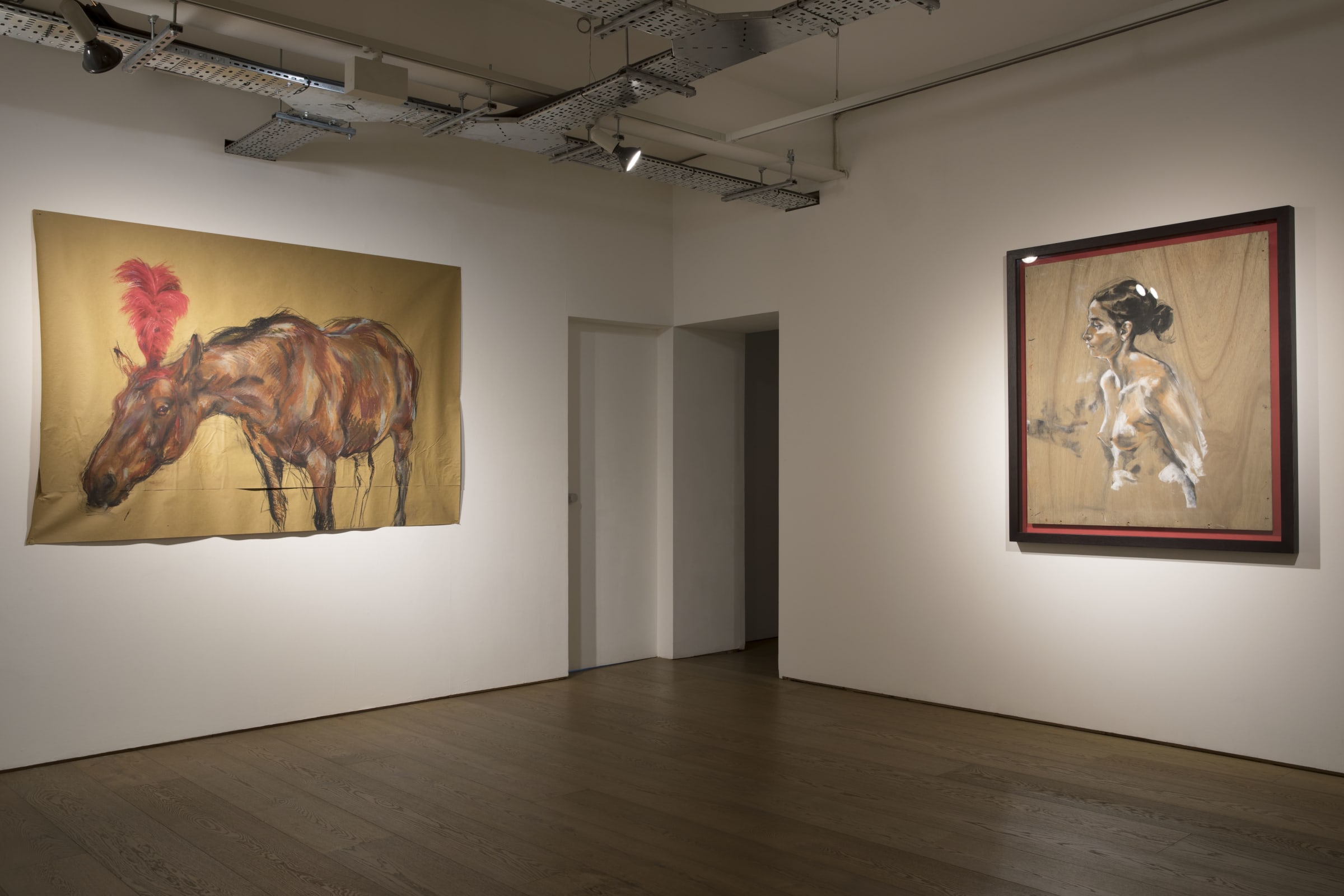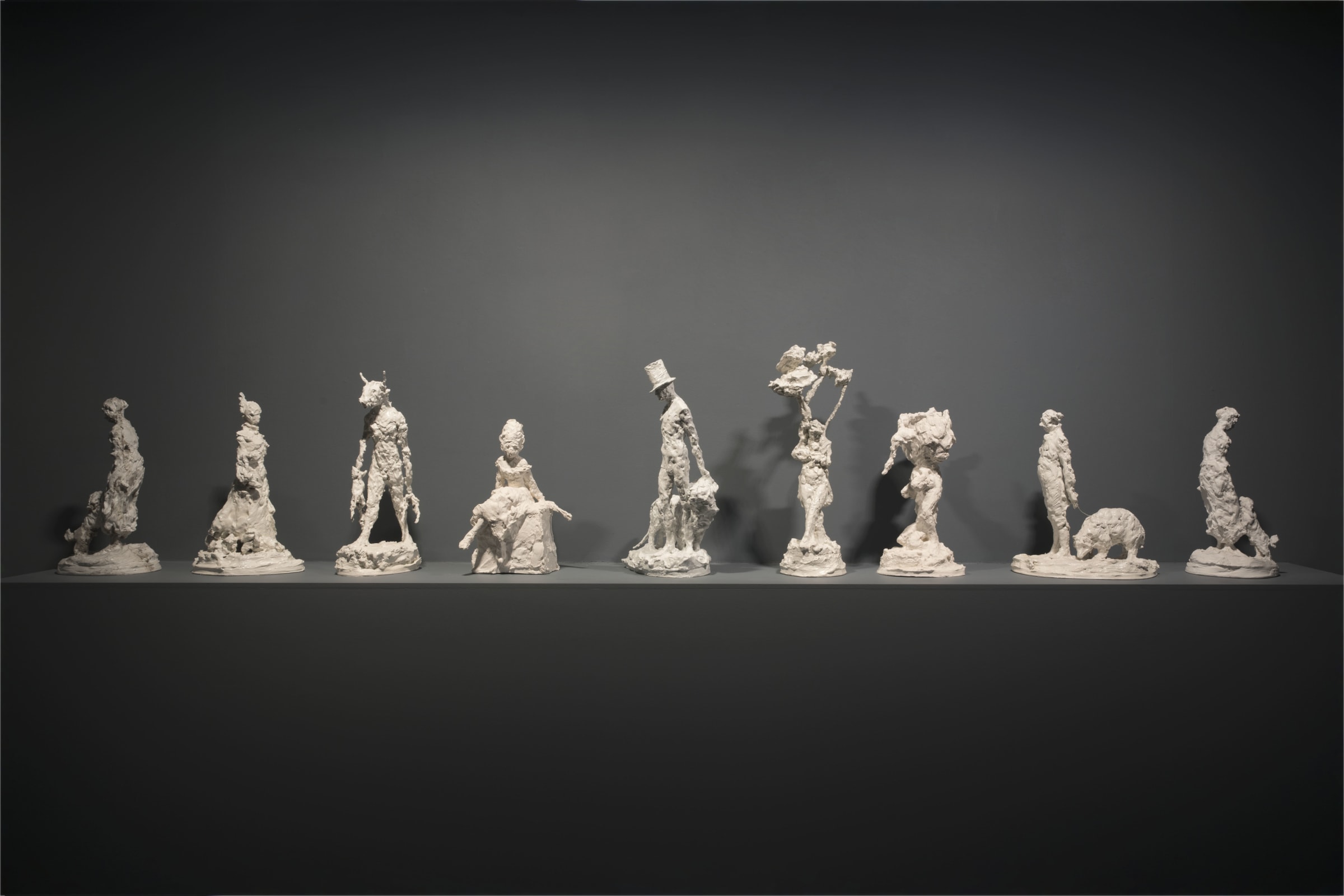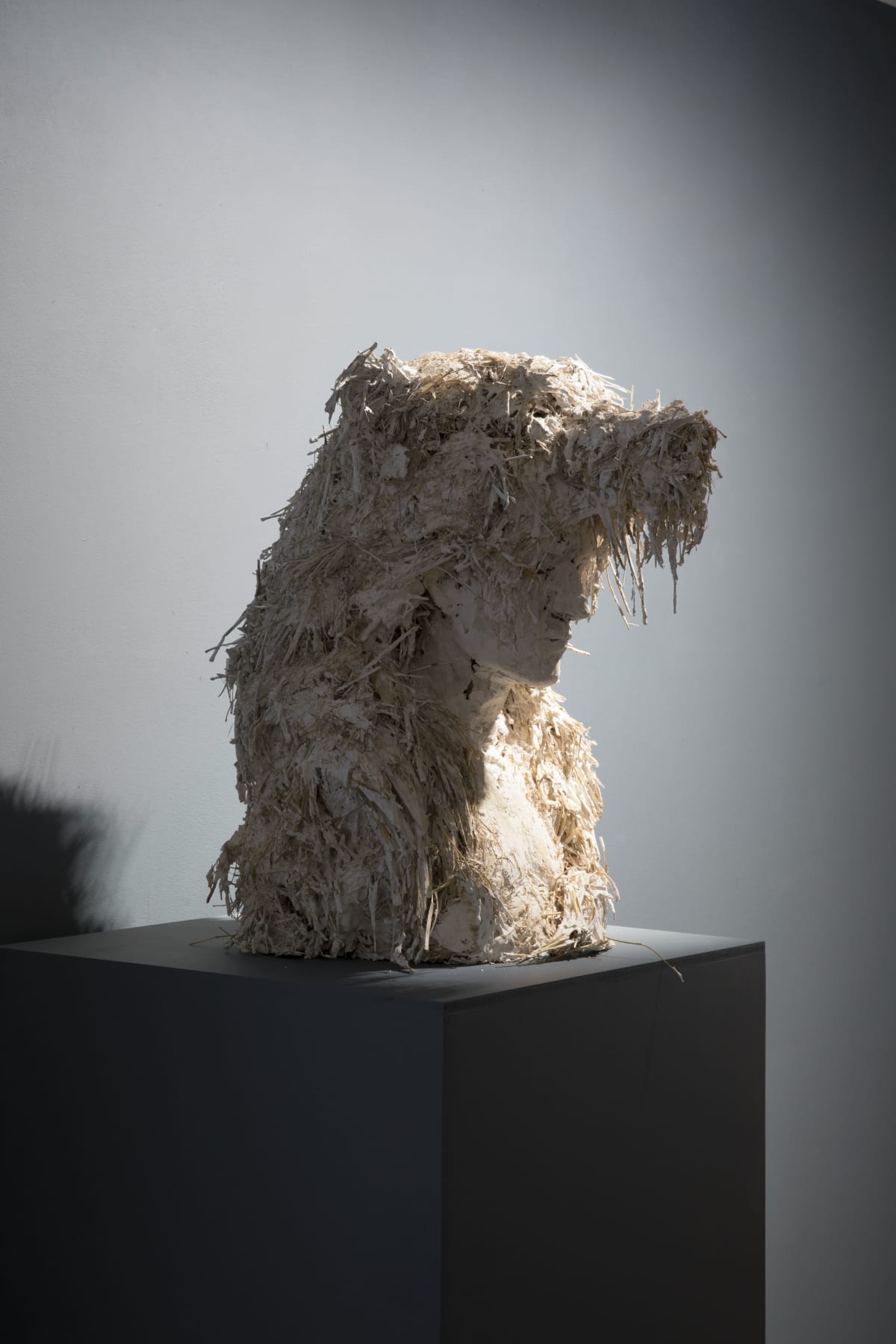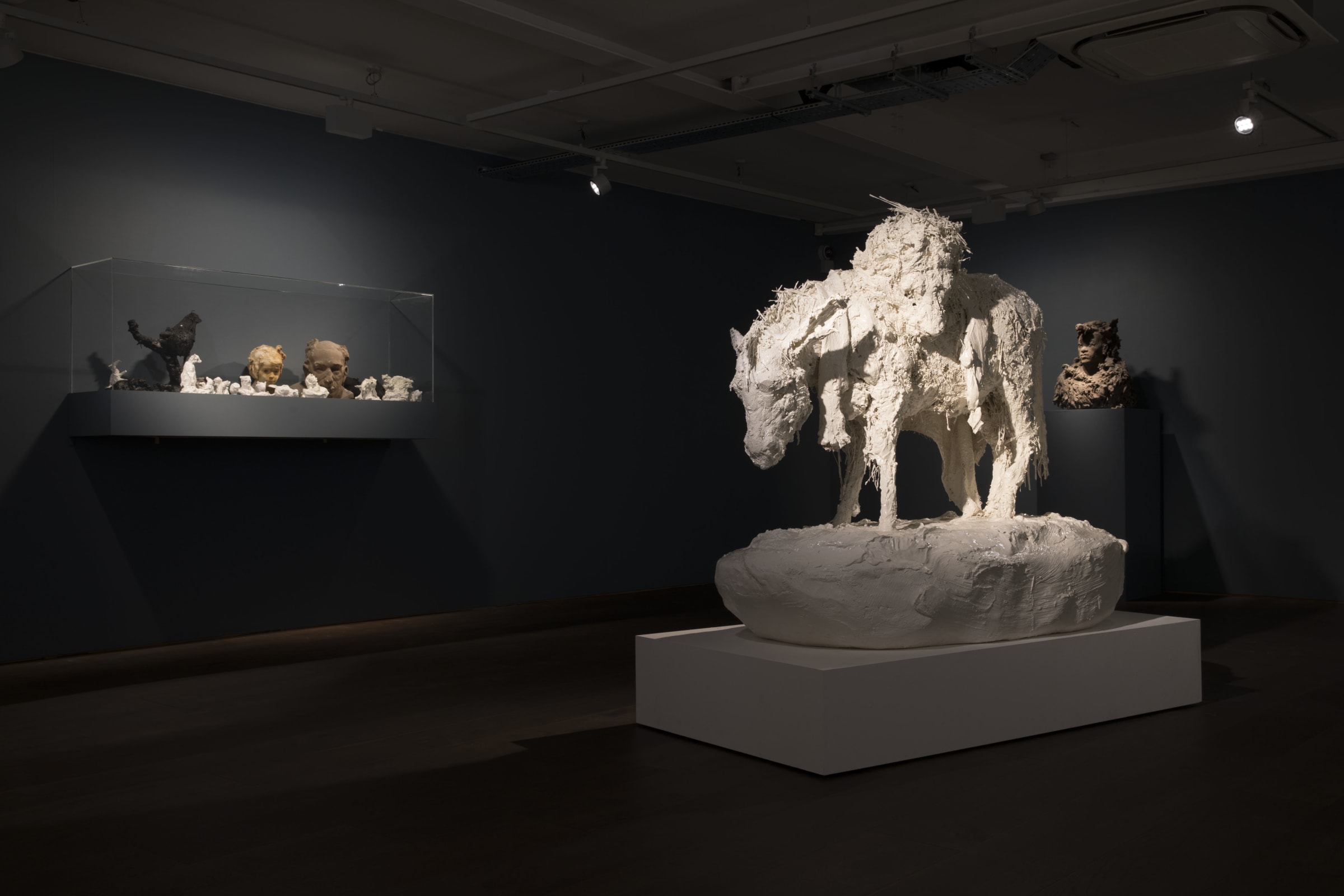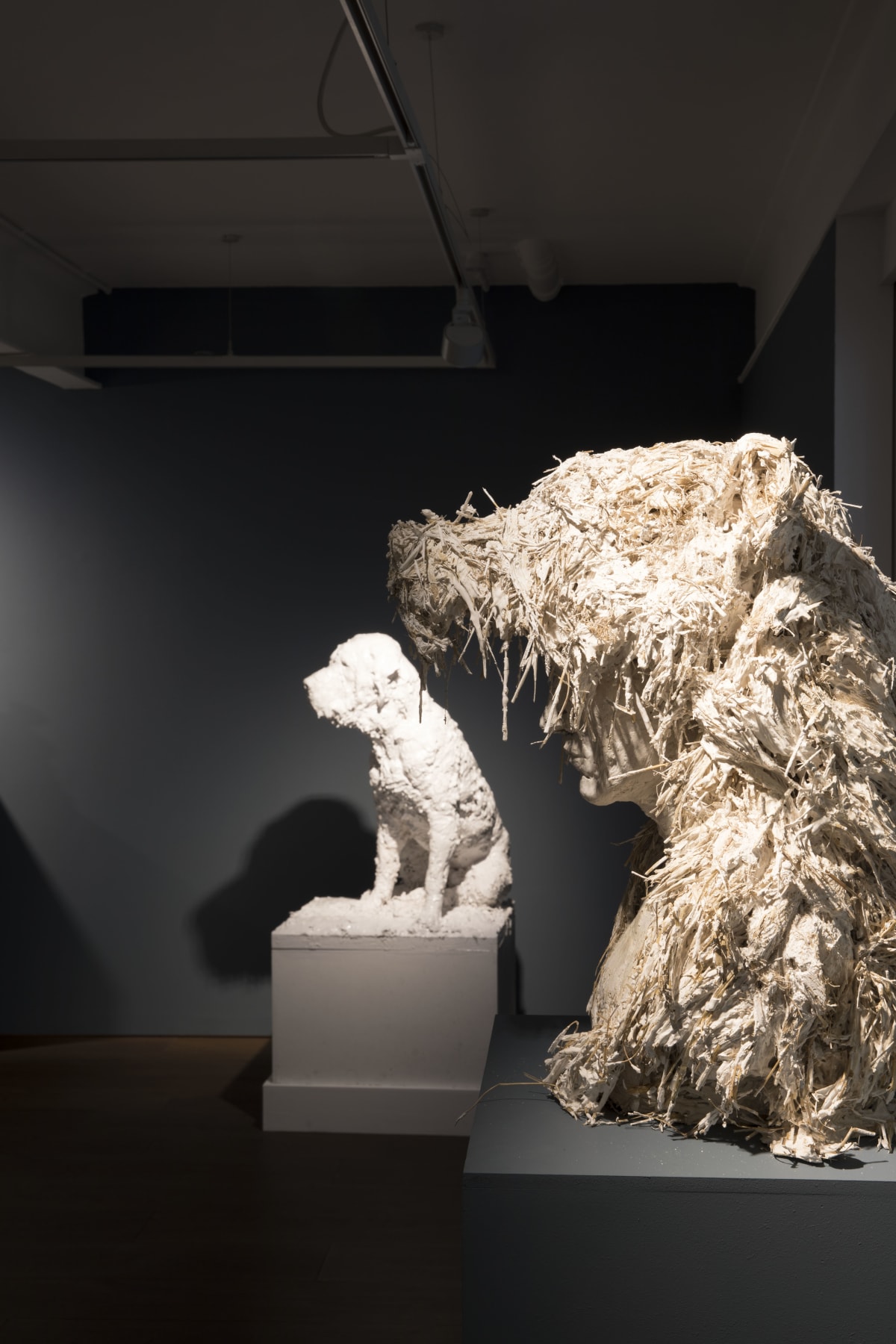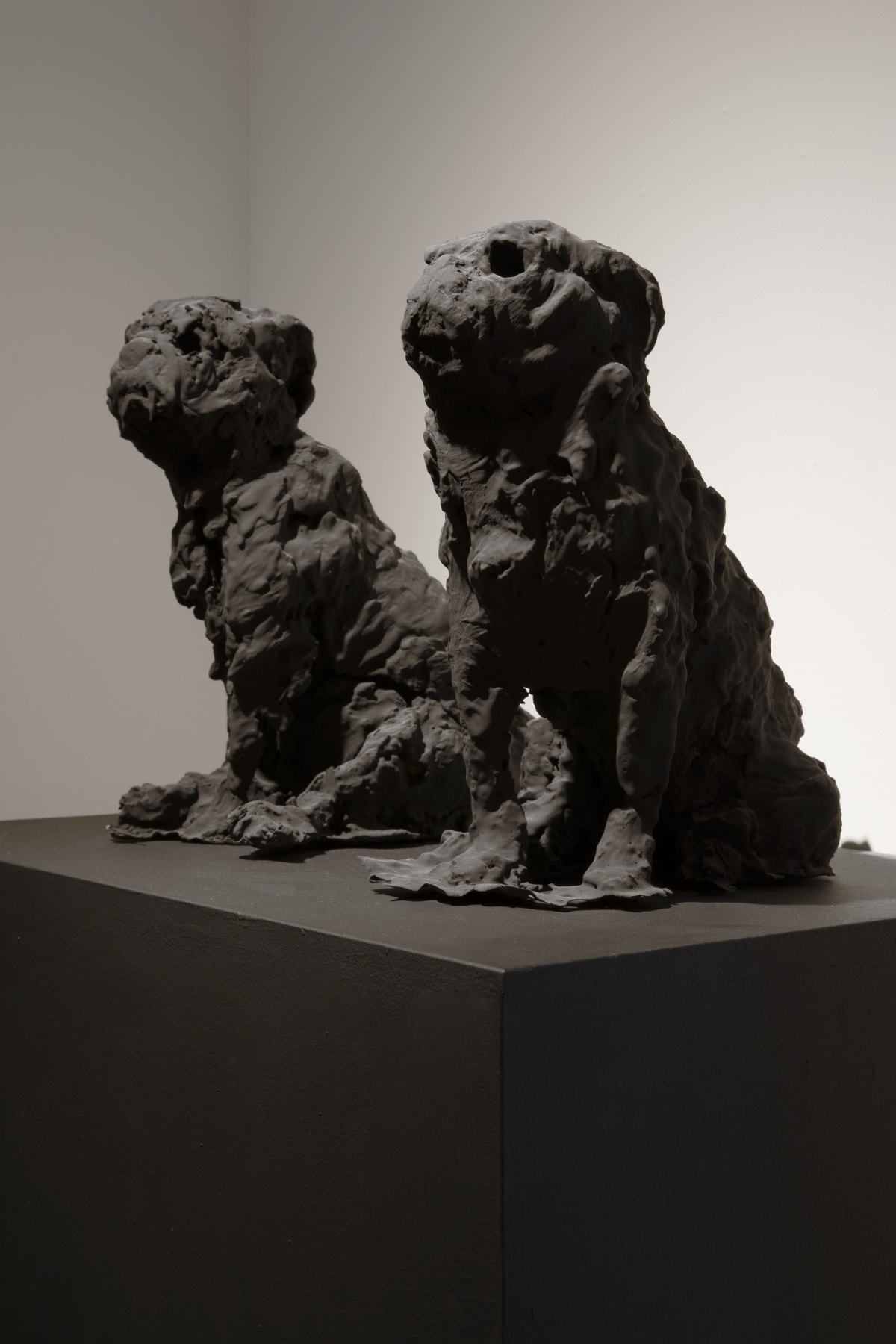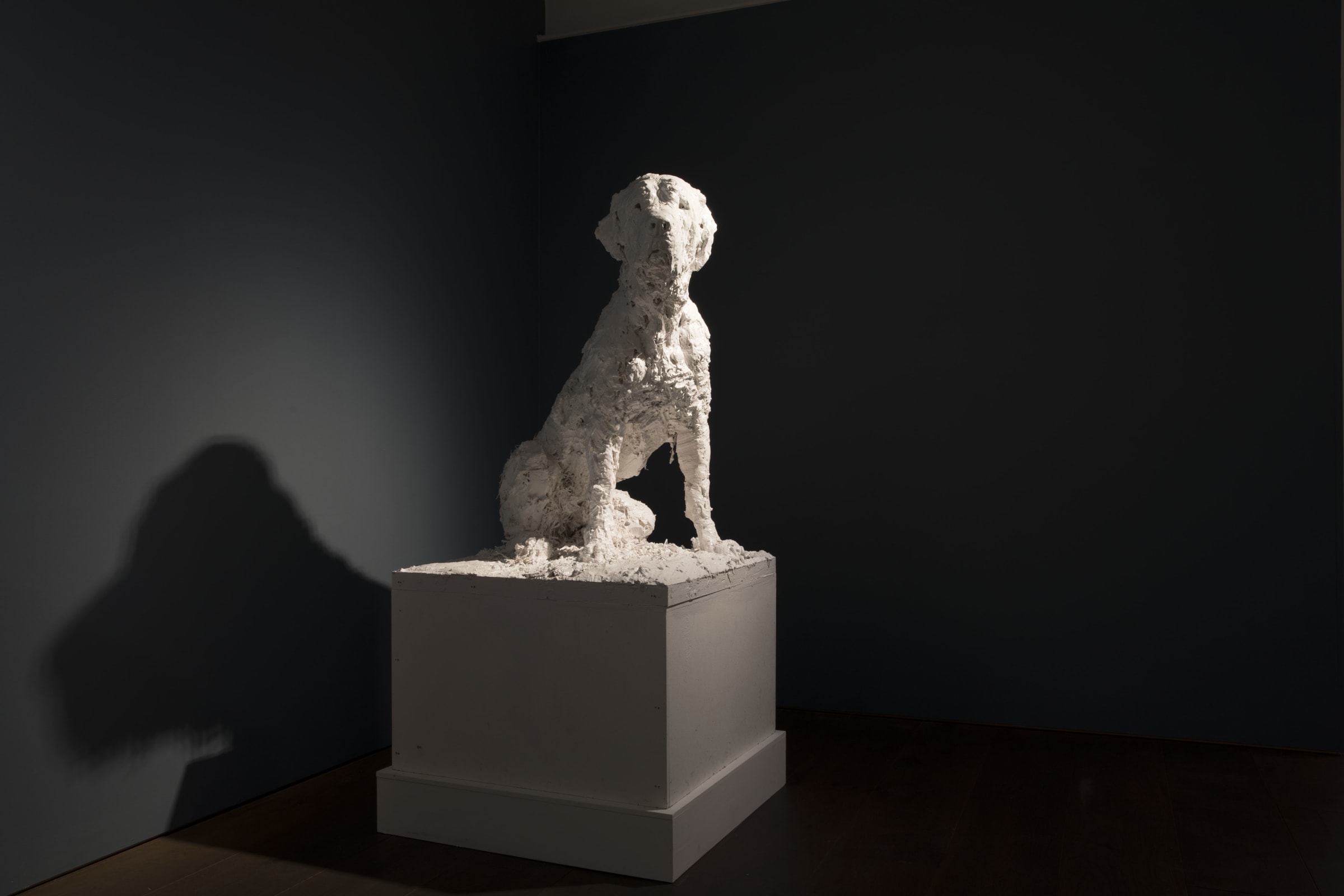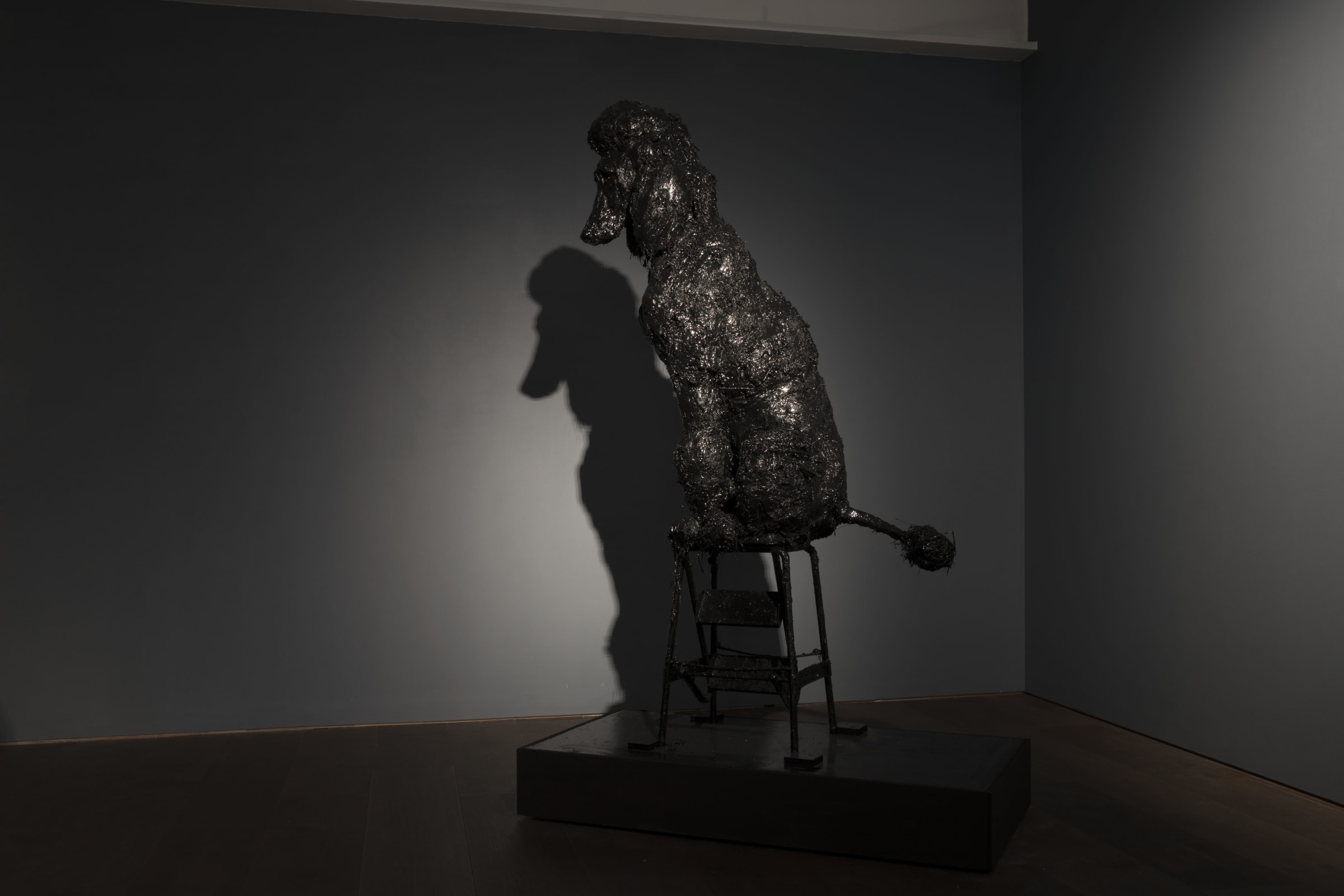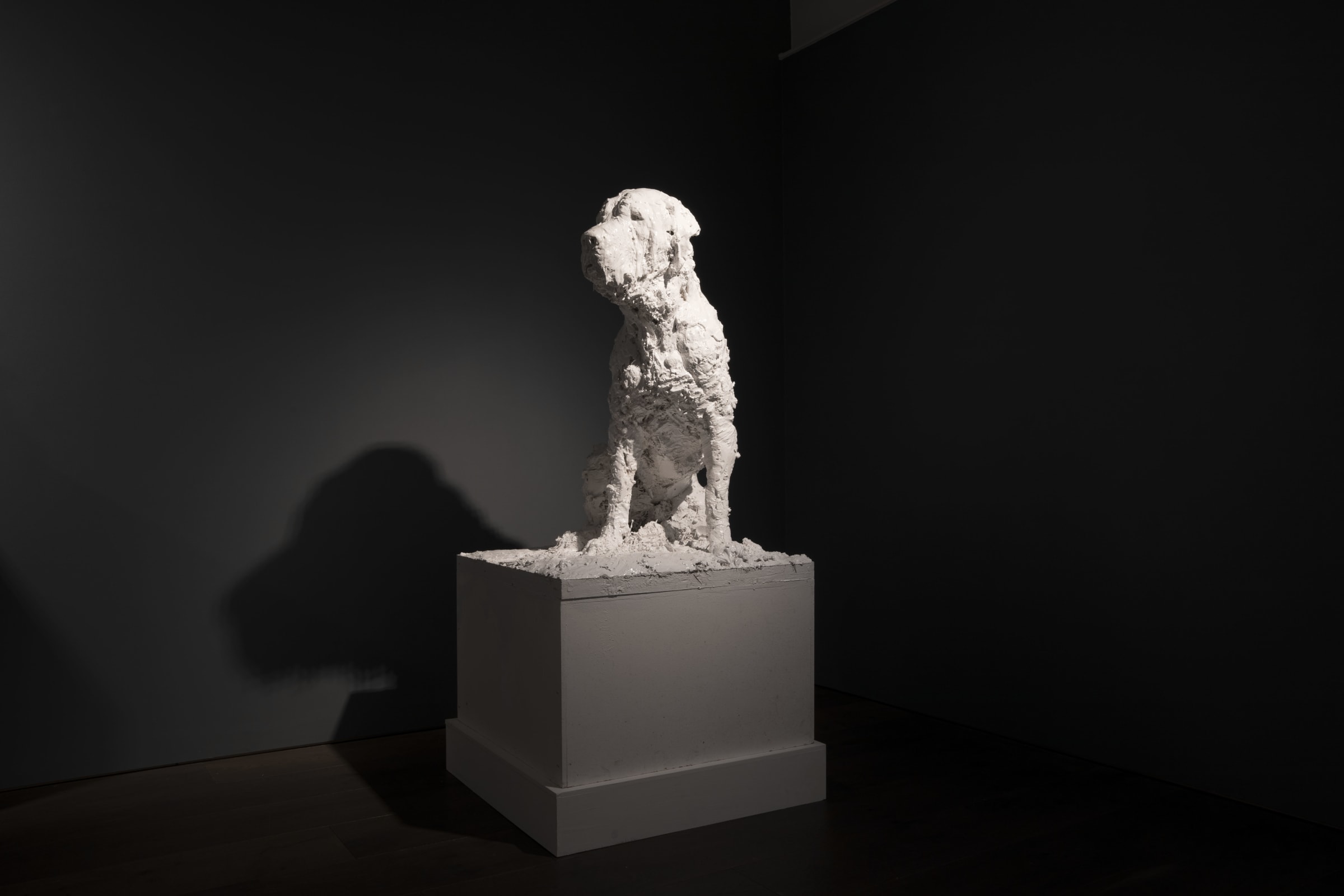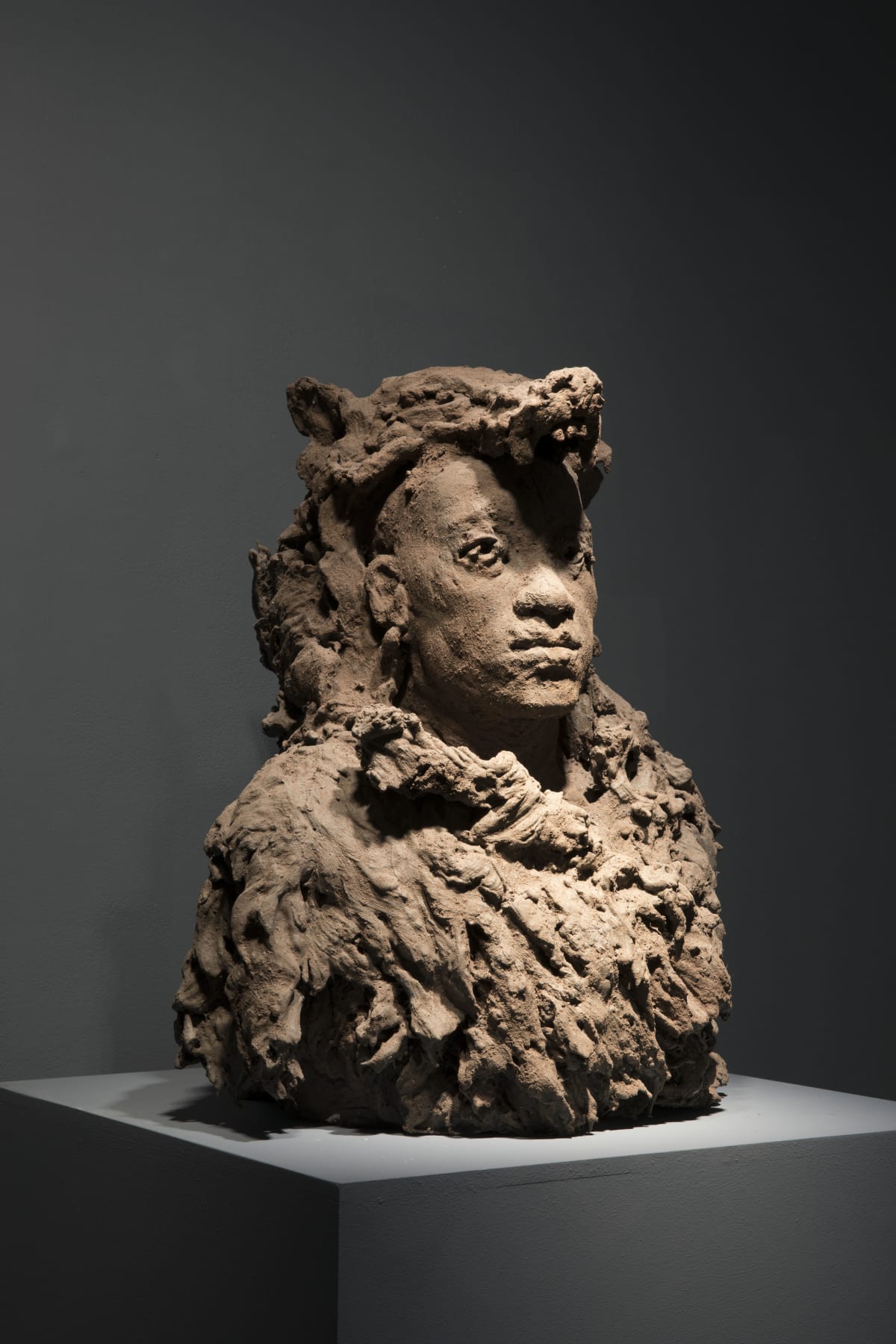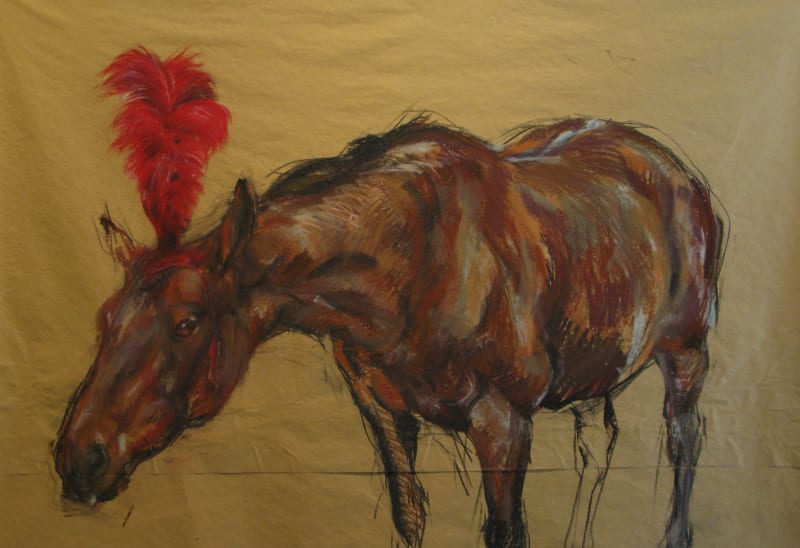Overview
The exhibition Wabbling Back to the Fire brings together sculptures from 1999 to the present day, drawing on themes that express the universal, and often darker aspects of humanity, encompassing grief, love, understanding, war and money.
For the past four decades British artist Nicola Hicks’s practice has centred around a world of heroic sculptural figures, exploring an anthropomorphic relationship to the animal world through portraits of humanized creatures and beastlike humans. The exhibition Wabbling Back to the Fire brings together sculptures from 1999 to the present day, drawing on themes that express the universal, and often darker aspects of humanity, encompassing grief, love, understanding, war and money.
Central to the present exhibition is the new plaster sculpture, Willow Pattern, a near life-size re-imagining of the decorative 18th century blue and white 'Toile de Jouy'. Hicks’s brooding version of the original Toile design subverts its bucolic symbolism, balancing wildness with a sense of being contained. Dripping black, the central willow tree is besieged by crows - likely witnesses to the origins of the sinister ripple on the surface of the pond.
Also occupying a central position is Circus Horse, which despite its uncanny realism, can be considered a self-portrait, realised through an unselfconscious and imaginative transition to an alternate animal form. The horse, questing forward with its swinging ribcage and outstretched neck, still wears its feathers, remaining visible to the world.
One of the bodies of work to which Hicks relates most closely is the Aesop's Fables series of 2011, considering the characters as a type of shorthand with which the viewer may address their own story. In the present exhibition, the sculpture Who was I Kidding responds to the tale of The Ass in the Lion’s Skin, evoking the bristling shame of the exposed animal, its ears pinned back, the disguise slipping to the ground. Other works in the exhibition use disguises or masks as protective talismans, such as the three-part sculpture Dressed for the Woods, which portrays two children cloaked in fur, with tails and ears, and Brave, a raw, unpainted plaster sculpture depicting a young boy who draws his courage from the armour of a bearskin. Gleaned from the lived experience of family life, they suggest a maternal urge to shield the young and vulnerable. Similarly, the recent work Owl Boy addresses the fragile journey into manhood using an animal head as a mask. His heavy lids allude to a nocturnal existence, and the nerve-ridden, fractured feeling of a lack of sleep.
Further works relate encounters between characters through the call-and-response of sculptural shapes and forms. A lion drives its full weight onto the limp body of a dog, as though expressing the last breath from its ribcage. The lion's actions are, according to Hicks, loaded with impotence; she asks, “He has done it, now what?”
Themes of masculinity and power are explored in a series of smaller works under the collective title A Walk in the Park. Presented on a shelf, they are based on Chelsea Figures, a style of ornamental domestic pottery, commonly seen on latterday London mantelpieces. Hicks's re-visioned classical figures take the form of bankers (described by Hicks as the 'Gods of our current world'), walking along the Chelsea Embankment in various guises.
Hicks's distinction between 'feeling' and visual 'likeness' is most apparent in Broken, the most recent incarnation of another perennial theme, the Minotaur. Here the essence of the reclining beast is described fully through its fragmented bull's head and human torso, without the necessity for accompanying limbs. As Hicks has said, "the strength of an anatomical form is independent from its literal reality."
The exhibition coincides with a major new monograph published by Elephant in association with Flowers Gallery. Nicola Hicks: Keep Dark (Elephant, £25), brings together around 100 images of Hicks’s sculptures and drawings, from 1985 to the present day, with accompanying texts written by the acclaimed authors and leading cultural figures David Mamet, Candia McWilliam, Max Porter, Matilda Pye, Will Self and Patterson Sims.
ABOUT NICOLA HICKS
Nicola Hicks was born in London in 1960 and studied at Chelsea School of Art and the Royal College of Art. In 1995 Hicks was awarded an MBE for her contribution to the visual arts. Hicks’ sculpture and drawings have been presented in numerous international museums and galleries and she has completed several public commissions including large scale sculptures at Schoenthal Monastery, Langenbruck, Switzerland. Recent solo exhibitions include Tayloe Piggott Gallery, Wyoming USA; Sorry, Sorry Sarajevo, St Paul’s Cathedral, London; Sculpture by Nicola Hicks at the Yale Center for British Art, New Haven, United States; and her work was included in The Universal Addressability of Dumb Things, curated by Mark Leckey, as part of the Hayward Touring series at venues across the UK during 2013.
The exhibition Wabbling Back to the Fire brings together sculptures from 1999 to the present day, drawing on themes that express the universal, and often darker aspects of humanity, encompassing grief, love, understanding, war and money.
